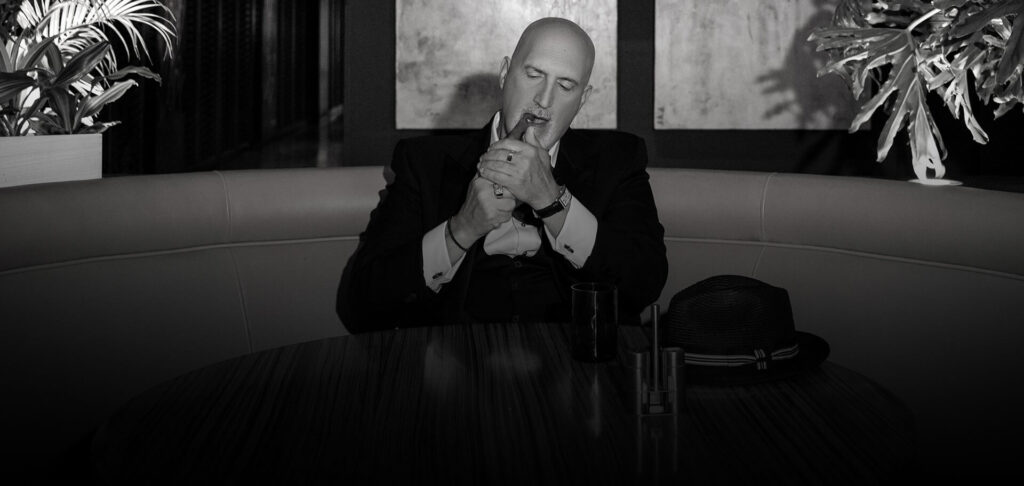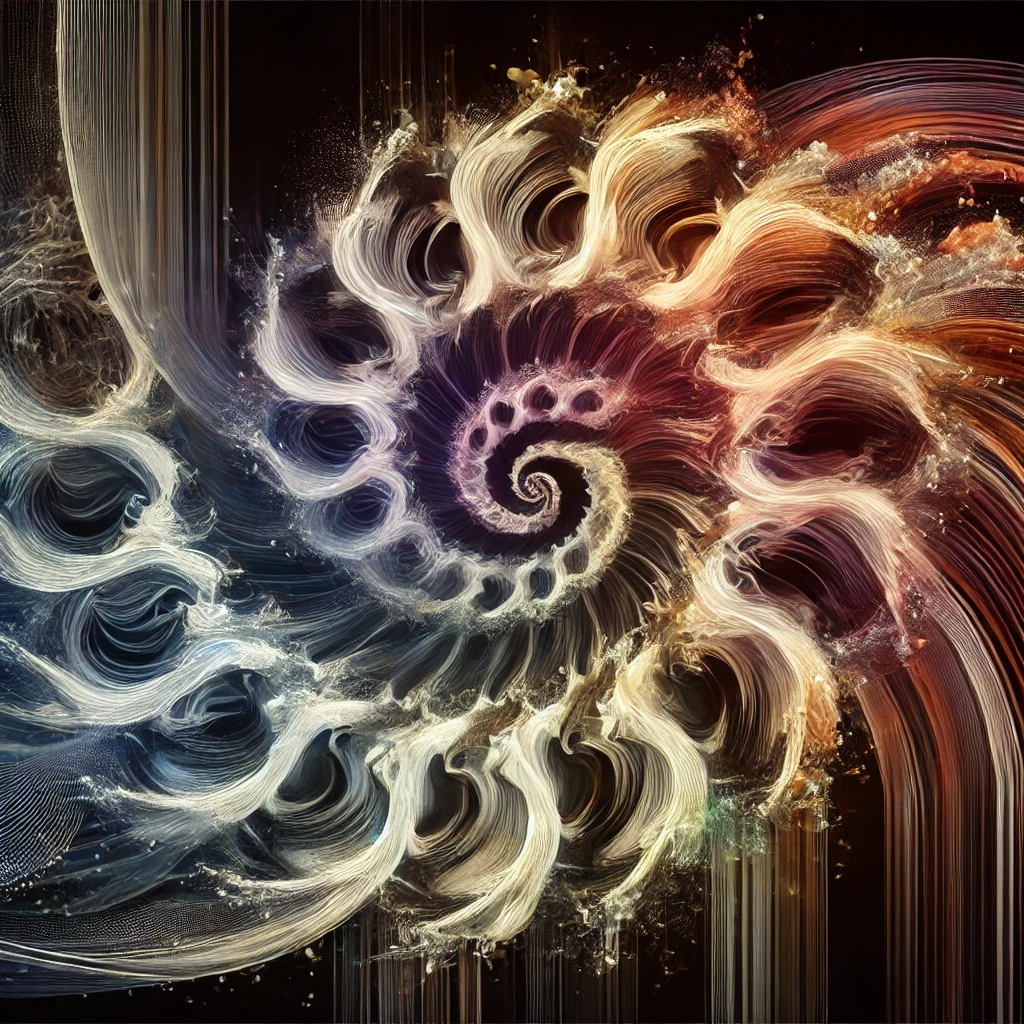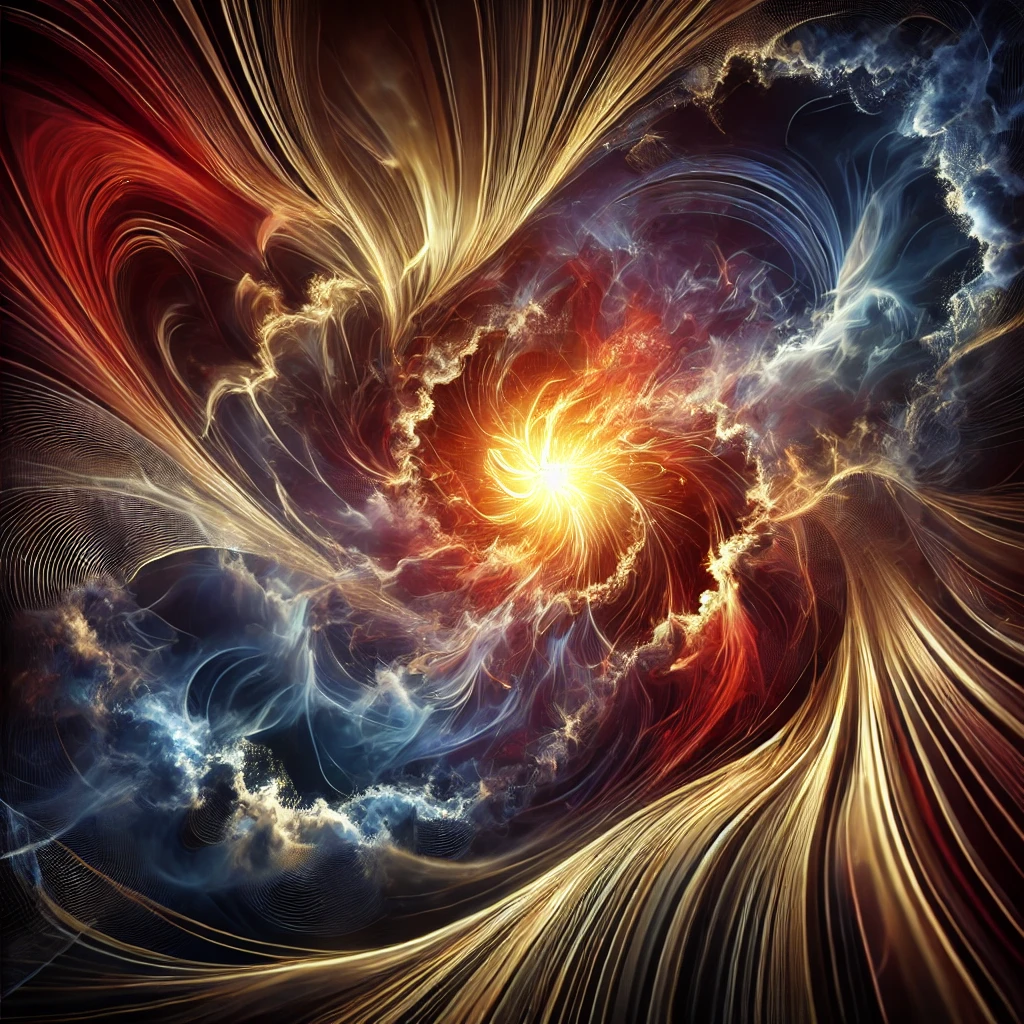Why Sir Issac Newton Had To “INVENT” Calculus … (and why his reason should matter to you)
 “If you can’t tell if it’s reality you’re dealing with, you can’t possibly expect take action to create the results you want.” – Joseph Riggio, Ph.D. author of “The State of Pefection: Unleashing Your Hidden Code To Mastery”
“If you can’t tell if it’s reality you’re dealing with, you can’t possibly expect take action to create the results you want.” – Joseph Riggio, Ph.D. author of “The State of Pefection: Unleashing Your Hidden Code To Mastery”
For decades I’ve been on about the alignment between our perceptions of reality (all I believe we ever have with regard to our sense of reality and our ability to act in the world as we know and experience it) and …
What’s beyond beyond our subjective, or constructed, experience .. the manifest and extant data in the environment … “objective, empirical evidence” … what we must accept as true even when we don’t agree with it or like it … as we know it to be through our own empirical, sensory perceptual experience.
BUT … this is no ordinary or easy task … i.e.: arriving at an empirical experience of reality that simultaneously allows for what cannot be known except by one’s own subjective, empirical perception and understanding.
AND, I beleive it is what Newton solved in creating “the Calculus.”
Give me a minute or two more and I’ll explain why I believe that … and what it means to you too.
Newton’s “Fluxional” Calculus:
Okay, to begin with we can’t really know if it was actually Issac Newton or Gottfied Leibniz who actually invented modern Calculus (the term was in use long before either of these 17th century genius, but referred to mathematics in general before it was formalized in the approach that we simply refer to as “calculus” today).
And … I don’t really care either …
The reason I want to focus on Newton is because his path to “the Calculus” was more general and applicable, and less theoretcial and sweeping philosophically than Leibniz’s approach.
Leibniz believed that “the Calculus” was a metaphysical explanation of change, i.e.: beyond the material realm, but nonetheless fascinating as a method to explore what was not possible to capture in the physical plane of existence, his was the “Infinitesimal Calculus” the sought to explore infinitesimal events as they were held as concepts of thought.
Newton on the other hand saw Calculus as a general explanation of change, and in specific a way to mathematically understand, capture and describe the motion of objects … especially when dealing with the magnitude of the motion of the objects in question.
Another reason is that I love the way Newton referred to what we know think of as formalization of the Calculus he developed; “Fluxional Calculus” … it just appeals to me.
However, the deep distinction in Newton’s calculus was that he tried to avoid infinitesimals, i.e.: that which could not be grasped empirically, but defaulting to a strictly rigorous epiricism. His was a task of explaining “the indisputable fact of motion” by accepting that as objects moved they were transiting a path that was continuous and not made up of infinitesimally small increments of movement.
This is a distinction between the empiricism of the analog in motion and the imaginal of the digial points that a moving object occupys in some unique, divided and separate instant from all other instants it occupies along the path it transits.
&nspb;
Why Newton HAD To Invent Calculus”
It’s claimed that Newton “HAD” to invent the Calculus to gain acceptance of his theory of gravity with the Royal Academy of Science in England … and there’s some truth to that, but it wasn’t the only reason he began or became obsessed with the path that led to his Fluxional Calculus.
Newton HAD to invent calculus to give him a way to describe the world that had become empirically obvious and undeniable to him … a world filled with motion and change that was constant, continuous, inevitable and unbroken or indissolvable into discreet and distinct separate elements or moments in space or time.
One of the most fascinating things about Newton’s (and Leibniz’s) calculus, that described motion and change, to me was that it demanded the creation of an entire new system of mathematical representation for the elements and concepts that it was addressing and workign with as a “tautology” … a closed, self-contained, way of considering reality as we know it, with it own set of self-referencing, self-organizing principals, rules and language.
So Why Should You Care About Any Of This???
The reason to care about this is simple … because your life depends on it!
Okay … Okay … maybe I’m being a little melodramatic for effect.
BUT, let’s say that the quality of your life, and the experiences you have, do actually depend on it … i.e.: your ability to describe reality beyond yourself, or your solipsistic, singular way of knowing.
To put it another way … YOU NEED TO HAVE MULTIPLE POINTS OF VIEW TO MAKE SENSE OF ANYTHING BEYOND A WILD HALLUCINATION OF WHAT YOU THINK IS “OUT THERE” IN THE WORLD BEYOND YOURSELF … that thing we call “reality.”
You see your own personal experience of anything is “non-falsifiable” as your experience. Your experience is what it is absolutely, undeniably and indisputedly … just like an object in motion is an object in motion.
However, to make sense of your experience in relation to the world beyond yourself … the experience others are having – of themselves, of you, of the world you are experiencing in simultaneity … or, the events that are occuring that are beyond your ability to contain personally … just about any event that includes more than just you yourself experiencing just you yourself … you must have a way to “triangulate” and navigate your experience in reference to what is beyond just you.
(I recommend you slow down … go back … and re-read that paragraph a few more times. It’s both essential to what I’m offering you here, and also critical if you want the value of what I’m offering you here as well.)
This is the essence of the work I refer to as accessing “The State of Perfection” … a way of moving towards a more rigorous empiricial position that begins by having access to and the ability to sustain multiple points of view …
- One point of view that you must gain a handle on is what we can call a “first person point of view” (FP-POV). A FP-POV is the point of view that you have from within yourself, i.e.: your experience of your experience … the point of view that is absolute, undeniable and indisputable.
- Another point of view you can have is a “second person point of view” (SP-POV). A SP-POV is one in which you consider what it would be like to experience the experience you’re having if you were another person having the experience of being with you … having your experience.This one’s a little more complex in that you have to hold two points of view simutaneously to get there … the point of view of what it would be like to notice another person having an experience of being with you while you’re having the experience you’re having … AND, the point of view of noticing the experience that other person would be having of being with you.
- A third point of view could be one in which you are simply in an observer’s position noticing what there is to notice without referencing it as subjective experience … for example; “My arm is moving” as the pure experience of noticing that your arm is moving in detached way, almost as though it’s not your arm that’s moving … like you would notice someone else’s, anyone else’s arm moving. This would be a third person point of view (TP-POV).What’s significant is that you can extend the TP-POV to experiences that are not externally observable, for example: “I am angry … AND I’m feeling it as a tension in my abdominal area, while my hands and jaw are clenching, and I’m constracting all the muscles along my back from my waist to my next far more than I am usually aware of contracting them … and, I also notice that my field of vision seems to be much narrower and more tightly focused than is usual to me.” without becoming attached to any of that description beyond noticing what’s there … i.e.: not wanting or needing it to be anything other than or different than what it is “as is.”The TP-POV would then become a kind of “empirical” or “epistemlogical” phenomenology … i.e.: an examination of the content of your own experience as though from a position beyond, or outside of yourself, where you are extremely interested in and observant of the data about what you are experiencing without attaching any meaning to it beyond a pure description of what you’re observing about it.
When you can access these multiple points of view, especially a TP-POV … an epistemological phenomenological” point of view … you will be infinitely better at managing your perceptions and actions to direct them to the outcome positions you most want to attain.
This is how you will begin to gather the ability to optimize all your experiences … regardless of the circumstance or situation, on your own and/or with others.
So Why Bring Newton Into This Conversation About Optimal Experience Then???
There are two reasons that the discussion about Newton creating Fluxtional Calculus are important to this conversation …
- First, because it clarifies the distinction of subjective and empirical perception. Newton based virtually all of his discoveries and genius on holding a TP-POV that opened up a window to perceiving reality from simultaneous, multiple points of view … a kind of “G-d’s Eye” position, where Newton could and did perceive more of the hidden and elusive nature of reality than is immediately or ordinarily observable.E.g.: that gravity was a universal and constant force, that was changed depending on the factors of mass and distance of the objects exerting and being effected by the force of gravity … or the idea that white light was only a single way of perceiving multiple spectrums or bands of light that were simultaneoulsy present and experienced by the human eye as a single band of light, i.e.: white light, and that white light is unique in that it contains all the other bands of light that humans are capable of perceiving.
- Second, because Newton needed to create a separate specical language to describe the unique characteristics of reality that he was observing. Without the Calculus not only was it not possible to share with others what he was empirically observing as he experienced it … but it was impossible to share with them the ability to make similar observations and discoveries for themselves.Yet, with the new “language” of Fluxional Calculus anyone who choose to could use the tautological space created by it to replicate the observations of Newton from all three perceptual positions described above, a FP-POV, SP-POV or TP-POV, and also using this “language” begin to describe observations of their own and share them with others who could also experience them from a FP-POV, SP-POV or TP-POV for themselves including observations that Newton had not made, but opened up the possibility of making using the new form he had created and shared with them.
You Need A SPECIAL LANGUAGE To Describe The Otherwise Indescribable
In my own work, the MythoSelf Process model, I deal with an set of observations about the world that are premised on some special conditions as well …
- Starting from a uniquely positive point of view – the “excitatory state” or the neurological condition of the system remaining open to the inclusion of new data, even data that is contridictory, unfamiliar or previously unknown or unaccceptable
- Assuming a stance of possibility rather than limitation – the premise that any data, evidence or experience can lead to the next step to be taken toward as desired outcome, and not a limitation that prevents the possibility of achieving the outcome eventually
- Using the body as the basis of primary data about what is happening, rather than the distortion of tranforming sensory data into intellectualizations and abstractions – holding an embodied and situated way of experiencing real and imaginal events by attending first and foremost to the sensorial data, i.e.: the experience of seeing, hearing, feeling, tasting and smelling, as well as the body sense of balance and proprioception in an integrated and cumulative way as the singluarity of the felt sense of the experience as well as the individual components that comprise it (the felt sense)
- Organizing the totality of experience as containing the singularity of space and time as mythic form – understanding the primary autobiographical narrative that is your own Life Story, i.e.: who you perceive yourself to be in relation to the world-at-large and the cosmos within which that world is situated
- Recognizing the “storied nature” of experience and how we tend to experience events in an integrated way happenign simultaneously in terms of all the data that is present along a continuum of time that we later describe in discreet packets of information – e.g.: first this happened and then that, separating the analog nature of actual space-time into a digital representation of space-time
- Defaulting to the premise of wholeform learning and communication in that we accept that all experience is wholeform with all events containing all the information present in simultaneity – this presupposes that all of our experiences are also had in simultaneity with all of the data impressing itself on our senses as a singluarity in any given space-time moment, despite our desire to keep things discreet to make sense of them as individual events happening in parallel, i.e.: there is no separation posssible in the events we experience that happen in the same space-time moment
- That we can and do create our own experiences, constructing them out of wholeform structures, and then accept our constructions as what is “real” – and, by accepting that our experience is at least in part “made up” by us in wholeform that we also have the ability to choose the form we give to our experience
- That the primary mechanism we have for managing the way we construct our experience is somatic, i.e.: body-based, and that our somatic experience gives rise to our stories and the meaning we make of them, i.e.: our semantic experience – knowing that we only know what we know, and know what that (what we know) means, in the form of the stories we tell ourselves and others, and in the stories others tell us
- Only be integrating and aligning the somatic and semnatic forms we hold can we arrive at an integrated sense of ourselves and the world-at-large, as well as the cosmos and our place in it – this is the basis for the approach and methodology I use in working with the MythoSelf Process model, i.e.: Soma-Semantics, a way of simulaneously accessing and address the somatic and semantic forms that are the ways we represent reality to ourselves and others
So, fundamentally to do the work I do I had to create a tautology for the model, i.e.: a self-contained, self-referencing, self-organizing system with it’s own set of principals and rules, as well as it’s own language … in much the same way that Newton and Leibniz had to do to form a way to capture and describe the nature of motion and change that is the Calculus.
In my case, the approach and methology of Soma-Semantics, is the form of describing how we capture and describe the nature of subjective experience and change within it. This is the basis for transformational change – the changing of our experince of reality NOT the change of what we do in response to our experience of realty.
Within the application of the MythoSelf Process model from the transformational shift that becomes possible using the approach and methodology of Soma-Semantics, a second possiblity emerges … that of realizing a significant performance breakthrough, which is only possible to the extent that it is when transformational change has happened first, i.e.: a shift in the fundamental perception of reality.
The essential starting point for achieving transformational performance, where transformational change and performance breakthrough intersect, is the State of Perfection the state experience that is established at the start of the application of the MythoSelf Process work. Without this body-based, felt sense of being in the world what follows would not be possible, with it nothing remains impossible …
Yet, once you have accessed and sustain the State of Perfection all things become possible to you.
All the Best,
Joseph Riggio, Ph.D.
Creator of the MythoSelf Process and Soma-Semantics
New Hope, PA
23 February 2016
PS – If you are interested in experiencing the State of Perfection for yourself … click on this link for more:
The State of Perfection
PPS – I will be holding a special one time only 2-hour webcast event, “Accessing & Sustaining The State Of Perfection” on 8 March 2016



